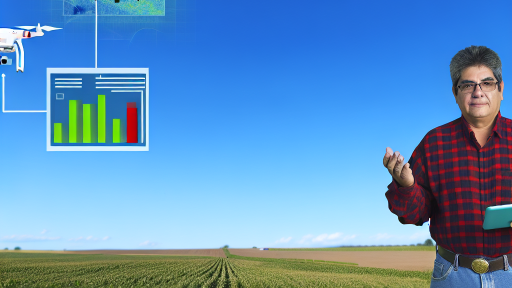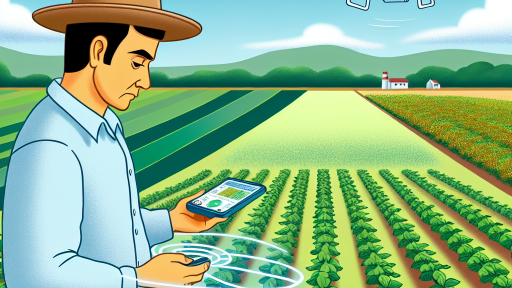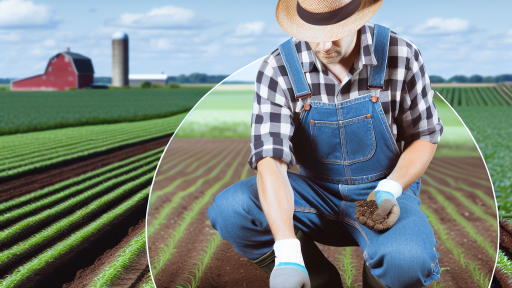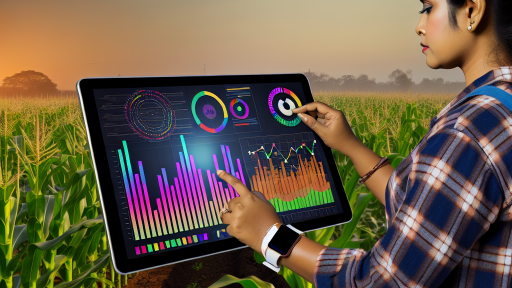Overview of Livestock Management and Its Importance
Livestock management plays a crucial role in agriculture.
It ensures sustainable animal husbandry practices.
Farmers actively monitor their livestock’s health and well-being.
Efficient management leads to increased productivity.
Moreover, it enhances the quality of livestock products.
Key Components of Effective Livestock Management
Effective livestock management involves several key components.
First, regular health check-ups are essential.
These check-ups help identify diseases early.
Consequently, farmers can take immediate action to treat animals.
Nutrition and Feeding Practices
Nutrition significantly impacts livestock health.
Proper feeding ensures animals receive vital nutrients.
This practice promotes growth and milk or meat production.
The Role of Technology in Livestock Management
Technology enhances livestock management practices.
Farmers now use data analytics for monitoring herds.
This innovation allows for better decision-making.
Transform Your Agribusiness
Unlock your farm's potential with expert advice tailored to your needs. Get actionable steps that drive real results.
Get StartedMoreover, it leads to optimized resource use.
Data Collection and Analysis
Data collection is vital for modern livestock management.
Farmers gather information on animal health, breeding, and productivity.
Subsequently, they analyze this data to improve operations.
Environmental and Ethical Considerations
Livestock management practices also bear environmental impacts.
Waste management strategies are necessary to minimize pollution.
Additionally, ethical treatment of livestock is critical.
Farmers must provide humane conditions for all animals.
Benefits of Good Practices
Implementing good livestock management practices offers numerous benefits.
- Improved animal health and welfare
- Increased productivity and profitability
- Enhanced sustainability of farming operations
Introduction to Data-Driven Decision Making in Agriculture
Data-driven decision-making transforms how farmers manage livestock.
It allows them to leverage technology and data analytics for better outcomes.
With tools like sensors and software, farmers can collect and analyze vital information.
This approach helps in optimizing feed management, health monitoring, and breeding selections.
The Importance of Data in Livestock Management
Data plays a critical role in modern livestock management.
By evaluating data, farmers can make informed choices that enhance productivity.
Moreover, data helps to identify trends and patterns in livestock behavior.
This understanding leads to improved animal welfare and efficiency.
Types of Data Utilized in Agriculture
Various types of data enhance livestock management practices.
Operational data includes herd size, feed consumption, and health records.
Moreover, environmental data encompasses weather conditions and pasture quality.
Economic data focuses on costs, revenues, and market trends.
Utilizing multiple data sources creates a comprehensive management strategy.
Tools and Technologies Supporting Data-Driven Decisions
Several tools contribute to effective data collection and analysis.
Software platforms enable farmers to manage and visualize key performance indicators.
Showcase Your Farming Business
Publish your professional farming services profile on our blog for a one-time fee of $200 and reach a dedicated audience of farmers and agribusiness owners.
Publish Your ProfileWearable technology provides real-time health and activity data for individual animals.
Additionally, drones and satellite imagery assist in monitoring pasture conditions.
Benefits of Implementing Data-Driven Approaches
Adopting data-driven methods offers numerous advantages to farmers.
Enhanced decision-making leads to better resource allocation and reduced costs.
Furthermore, improved animal health monitoring reduces veterinary expenses.
Ultimately, these practices contribute to sustainable and profitable livestock farming.
Key Technologies for Data Collection in Livestock Management
Wearable Technologies
Wearable technologies enhance livestock monitoring directly on the animals.
These devices track health metrics, such as heart rate and activity levels.
Farmers receive alerts for any unexpected changes in these metrics.
As a result, timely interventions can prevent severe health issues.
Remote Sensing
Remote sensing technologies offer a bird’s-eye view of livestock operations.
Drones equipped with high-resolution cameras can survey large areas efficiently.
These images help identify issues like overgrazing or water scarcity.
Consequently, farmers can make better decisions regarding resource allocation.
Mobile Apps
Mobile applications simplify livestock management tasks.
These apps provide features for tracking feeding schedules and health records.
They also allow for real-time communication among farm staff.
Furthermore, notifications remind users of critical deadlines, enhancing organization.
Data Analytics Platforms
Data analytics platforms process vast amounts of livestock data.
These platforms uncover trends that improve decision-making processes.
Farmers can analyze growth rates, breeding efficiency, and feeding costs.
As a result, they optimize overall farm productivity and profitability.
Internet of Things (IoT)
The IoT connects various devices for seamless data exchange.
Smart sensors monitor environmental conditions such as temperature and humidity.
This data allows for adjustments in real-time to improve animal welfare.
In addition, IoT devices help automate routine processes, saving time.
Blockchain Technology
Blockchain technology ensures transparency and traceability in livestock supply chains.
This technology securely records every transaction from farm to market.
Farmers gain credibility by demonstrating ethical and sustainable practices.
Consequently, consumers feel more confident in their purchasing decisions.
Gain More Insights: How Automated Machinery Enhances Crop Production
Benefits of Using Data Analytics in Livestock Health Monitoring
Enhanced Disease Management
Data analytics enables farmers to track livestock health patterns over time.
This helps managers identify disease outbreaks early.
Consequently, it minimizes the spread of illnesses among herds.
Farmers can also respond quickly to health concerns.
Improved Breeding Decisions
Data analytics provides insights into genetic performance.
Farmers can analyze traits most beneficial for their specific environment.
This allows for informed breeding decisions to improve overall herd quality.
Ultimately, it contributes to increased profitability for farmers.
Efficient Resource Management
With data-driven decisions, farmers optimize resource use.
Showcase Your Farming Business
Publish your professional farming services profile on our blog for a one-time fee of $200 and reach a dedicated audience of farmers and agribusiness owners.
Publish Your ProfileAnalytics helps track feed consumption and requirements.
This reduces waste and lowers feeding costs.
Moreover, better resource management boosts livestock productivity.
Real-Time Monitoring
Data analytics facilitates real-time monitoring of livestock health.
Wearable technology can provide instant feedback on animal well-being.
This allows farmers to detect issues before they escalate.
As a result, it enhances the overall health and productivity of the herd.
Cost Savings
Incorporating data analytics into livestock management leads to substantial cost savings.
Early disease detection reduces veterinary costs significantly.
Additionally, optimizing feed use can lead to lower operating expenses.
Overall, these savings contribute to a more sustainable farming operation.
Delve into the Subject: Smart Vertical Farming Technologies for Agriculture
Implementing Precision Livestock Farming Techniques
Overview of Precision Livestock Farming
Precision livestock farming optimizes animal husbandry practices.
It uses advanced technologies to monitor livestock in real-time.
This approach improves overall herd management and productivity.
Technological Components
Precision farming relies on various technological components.
These include sensors, drones, and data analytics software.
Each technology serves a specific purpose in livestock management.
Monitoring Health and Behavior
Sensors monitor each animal’s health continuously.
They detect variations in behavior or physical condition.
This allows for early intervention when issues arise.
Managing Nutrition
Smart feeding systems customize diets for individual animals.
They ensure that each livestock receives proper nutrition.
This leads to healthier animals and better productivity.
Data Collection and Analysis
Data plays a crucial role in precision livestock farming.
Farmers collect data from multiple sources, such as sensors.
They then analyze this data to make informed decisions.
Utilizing Big Data
Big data analytics provide insights into farming practices.
Farmers can identify trends and optimize operations accordingly.
This enhances efficiency and sustainability in livestock farming.
Real-Time Decision Making
Real-time data enables swift management decisions.
Farmers can quickly adapt to changing conditions.
This improves overall herd well-being and production levels.
Challenges and Considerations
Despite its benefits, implementing precision livestock farming presents challenges.
The initial cost of technology can be significant.
Additionally, proper training is necessary for effective usage.
Financial Investment
Investing in technology requires careful financial planning.
Farmers should evaluate potential returns on their investments.
This includes increased productivity and efficiency over time.
Education and Training
Training programs are vital for successful implementation.
Showcase Your Farming Business
Publish your professional farming services profile on our blog for a one-time fee of $200 and reach a dedicated audience of farmers and agribusiness owners.
Publish Your ProfileFarmers need to understand each technology’s functions.
Moreover, ongoing support ensures they maximize their investments.
Benefits of Precision Livestock Farming
Implementing precision livestock farming yields numerous benefits.
Enhanced animal welfare is one of its primary advantages.
Additionally, farmers experience increased productivity and efficiency.
Improved Animal Welfare
With accurate monitoring, farmers respond to animal needs promptly.
This leads to healthier, happier animals on the farm.
Consequently, animal stress and mortality rates decrease.
Increased Efficiency and Profitability
Efficiency improvements result in lower operational costs.
Farmers can manage resources more effectively.
The enhanced productivity translates into increased profitability.
Delve into the Subject: Understanding Automated Machinery in Agriculture
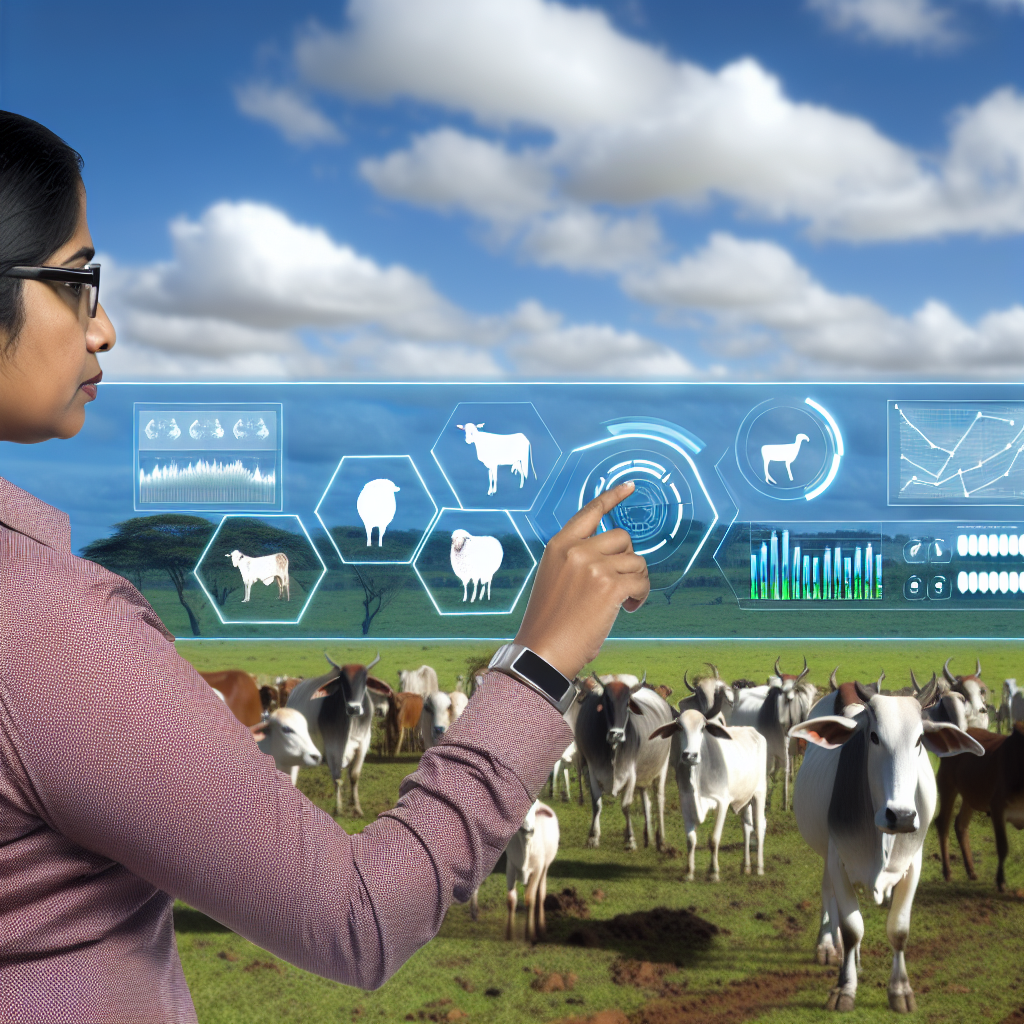
Case Studies: Success Stories in Data-Enhanced Livestock Management
Innovative Tracking Solutions
Green Pastures Farm adopted a GPS tracking system for their cattle.
This innovation streamlined their management process significantly.
Farmers can now monitor grazing patterns in real-time.
As a result, they’ve improved pasture efficiency and reduced overgrazing.
Adopting this technology led to a noticeable increase in milk production.
Green Pastures’ experience demonstrates the power of data in farming.
Health Monitoring Systems
Blue Hill Ranch implemented wearable technology for health tracking.
These devices collect vital health data on livestock continuously.
Farmers receive alerts about potential health issues immediately.
This proactive approach has decreased veterinary costs by 20%.
Moreover, it enhanced overall animal welfare significantly.
The success of Blue Hill Ranch highlights the benefits of health monitoring.
Data-Driven Decision Making
The Sunset Valley project emphasizes using data analytics for decision making.
By analyzing historical data, farmers can predict future trends effectively.
This approach helps in optimizing breeding and feeding strategies.
The results show an increase in reproduction rates by 15%.
Furthermore, it reduces feed costs, leading to greater profitability.
Sunset Valley’s case illustrates the importance of informed decisions.
Integrating Sustainable Practices
Eco Farms integrated data management with sustainable practices.
They monitor resource usage and environmental impact closely.
This initiative resulted in a 30% reduction in water usage.
Additionally, it improved pasture land quality over time.
The farm has become a model for sustainable livestock management.
Eco Farms’ success showcases the potential of data in sustainability.
Community Collaboration
River Bend Cooperative joined forces with local farmers for data sharing.
This collaboration enhanced market insights and resource allocation.
By working together, farmers increased bargaining power in the market.
The community now enjoys a 25% increase in profit margins collectively.
Showcase Your Farming Business
Publish your professional farming services profile on our blog for a one-time fee of $200 and reach a dedicated audience of farmers and agribusiness owners.
Publish Your ProfileFurthermore, shared data leads to better pest and disease management.
This case demonstrates the strength of community in data-driven farming.
Learn More: Implementing GPS Technology in Precision Farming
Challenges and Barriers to Adopting Data Technologies
Understanding Resistance
Resistance to change often hinders technology adoption in livestock management.
Farmers may prefer traditional methods over new data technologies.
This reluctance stems from a fear of unfamiliarity with technology.
Consequently, many are hesitant to invest in new tools.
Cost Considerations
Data technologies often come with significant upfront costs.
Budget constraints can limit a farmer’s ability to adopt these innovations.
Furthermore, ongoing maintenance expenses can add up quickly.
As a result, farmers weigh costs against potential benefits.
Data Security and Privacy Concerns
Data security remains a top concern among livestock producers.
Many worry about unauthorized access to their sensitive information.
Moreover, data breaches can lead to serious financial losses.
Consequently, this fear hampers adoption rates across the industry.
Limited Technical Knowledge
Many farmers lack the technical expertise to implement data technologies.
This knowledge gap creates barriers to effective utilization.
Additionally, training programs may not be widely accessible.
As a result, farmers miss out on valuable technological advancements.
Integration with Existing Systems
Integrating new data technologies with existing systems can be challenging.
Compatibility issues slow down the adoption process.
Farmers may find it difficult to synchronize old and new methodologies.
Consequently, operational efficiency suffers during the transition.
Regulatory Hurdles
Complex regulations can stifle innovation in livestock management.
Farmers often face bureaucratic red tape when adopting new technologies.
Compliance can be time-consuming and costly for small operations.
This uncertainty leads to hesitation in embracing data-driven solutions.
The Need for Supportive Ecosystems
Support from governmental and industry bodies is crucial for successful adoption.
Without assistance, farmers struggle to navigate new technological landscapes.
Partnerships can lead to shared resources and knowledge transfer.
Ultimately, a supportive ecosystem can alleviate many barriers.
Future Trends in Livestock Management: The Role of AI and IoT
Integration of Technology in Livestock Farming
Technology is transforming livestock management significantly.
Farmers utilize Artificial Intelligence and Internet of Things devices to enhance efficiency.
These tools provide real-time data on animal health and behavior.
Consequently, farmers can make informed management decisions quickly.
Enhancing Animal Health Monitoring
AI technologies analyze data to predict health issues in livestock.
For instance, wearables track vital signs and physical activity levels.
This proactive approach allows for early intervention.
Consequently, it leads to improved overall herd health and lower veterinary costs.
Streamlining Feeding Practices
IoT devices help optimize feeding schedules and quantities.
Showcase Your Farming Business
Publish your professional farming services profile on our blog for a one-time fee of $200 and reach a dedicated audience of farmers and agribusiness owners.
Publish Your ProfileThese devices monitor food intake and nutritional levels constantly.
As a result, farmers can adjust rations based on individual animal needs.
This personalized feeding promotes healthier growth rates and better feed efficiency.
Data-Driven Decision Making
Data analytics provide insights into livestock performance trends.
Farmers can assess growth rates, reproduction cycles, and production levels.
Moreover, this data helps in forecasting market demands and pricing.
Thus, enabling farmers to strategize their operations effectively.
Reducing Environmental Impact
AI and IoT can optimize resource use on farms.
This includes water management and waste reduction strategies.
Consequently, farmers can lower their carbon footprint.
Moreover, sustainable practices enhance the overall health of agricultural ecosystems.
Future Outlook for Livestock Management
The integration of AI and IoT continues to evolve.
Farmers are increasingly adopting these technologies across the globe.
Furthermore, advancements in technology promise even greater efficiencies.
This will drive the future of livestock management toward sustainable and profitable practices.

